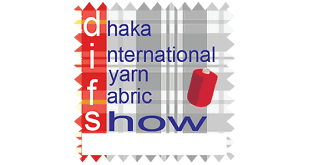A webinar titled ‘The science behind traditional fabrics of India and fashion world‘ was organised by Women Technology Section of Pushpa Gujral Science City on 19/12/2020.
Jalandhar: Jaspreet Talwar, principal secretary, Department of Water Supply and Sanitation, was the chief guest. Around 300 students pursuing fashion designing participated in the event. Talwar said, “India‘s textiles sector is one of the oldest and dates back to several centuries. Archaeological surveys and studies have indicated that people of Harappan civilization were familiar with weaving and spinning of cotton 4,000 years ago.”
She said, “Reference to weaving and spinning materials is also found in the Vedic literature and block-printed and resist-dyed fabric have been found at tombs in Misr-Al-Fustat and Egypt. Thus, indicating the export of Indian cotton textiles to Nile civilization.”
Science in textile industry: Webinar
Talwar added, “Large quantities of Indian silk were traded through silk route to western countries. At present, Indian fabrics are in high demand and textile exports contribute 5 per cent of India’s GDP. The sector is estimated to have a potential to reach $50 billion and it provides employment to over 45 million people directly and 60 million people indirectly. Science has significantly contributed towards development and use of traditional fabrics and continues to contribute to the development of textile industry.”
Dr. Neelima Jerath, director general, Science City, said, “Science has played a major role in promotion of handlooms, handicrafts and sericulture, besides technological contributions in weaving, spinning, dyeing and garment production through textile engineering.”
She said innovation, science and technology, has helped to develop new types of clothes, ‘Sustainable fabrics’, including paper cloth (used in high fashion clothing), pinatex from pineapple, micotex from mushroom, orange fibre cloth, ucalyptus yarn and cactus leather. It has also contributed in preservation of traditional fabrics, including vicuna wool, alpaca wool, cashmere wool and shahtoosh.
Harpreet Kaur, head, Department of Fashion Design, KMV College, introduced the participants to the world of textile crafts of India and made them understand finer details of traditional textile crafts and the fashion world. She explained the science behind fabrics, various scientific methods and techniques used in the manufacturing and designing of fabrics.
Harpreet said, “Everyone should adopt and purchase traditional Indian handicrafts as not only are they most suitable as per weather, but also made with fabrics dyed with natural dyes, which are non-allergic. Moreover, we contribute in preserving our heritage and provide sustainable livelihood to artisans. Thus, we do our bit as sustainable consumers by adopting 3Ps (planet, people and profit).”
 4Textile.com World Textile & Apparel Industry Events, News
4Textile.com World Textile & Apparel Industry Events, News







